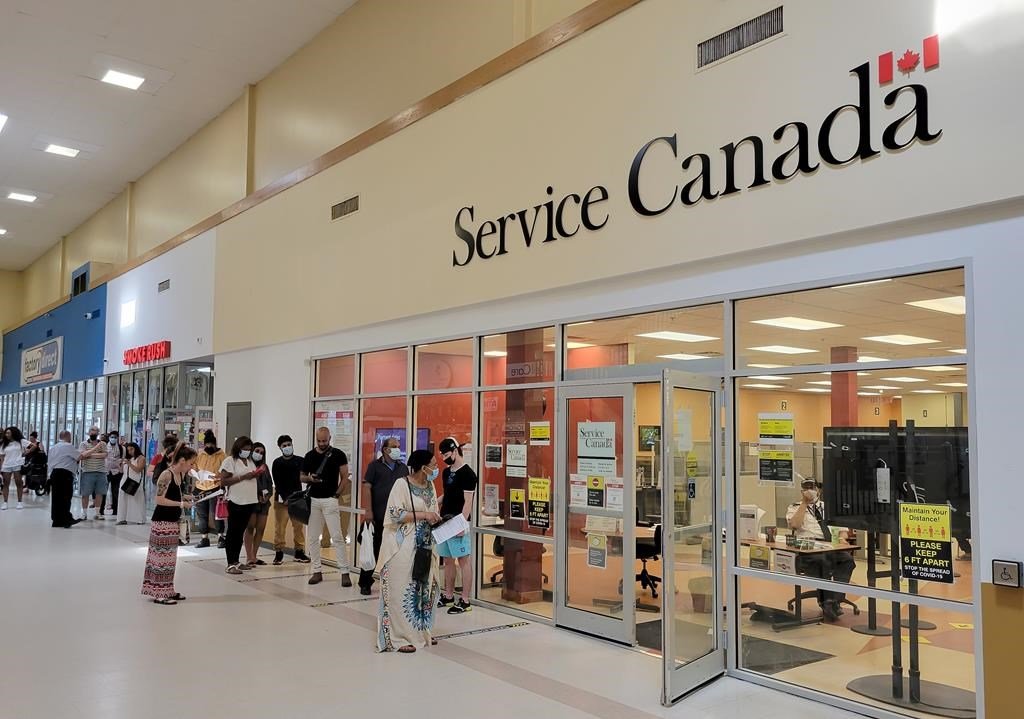Enhancing UX during the Passport Crisis
Service Canada
Source: Global News https://globalnews.ca/news/8966167/calgary-edmonton-triage-passport-office-system-service-canada/
As the lead for the passport program in the Client Experience Centre of Expertise, I spearheaded a comprehensive initiative to enhance the user experience of the Canada.ca Passport web pages during the spring and summer of 2022. This project addressed significant user frustrations during a period of unprecedented demand and processing delays due to a surge in applications as travel restrictions lifted post-pandemic. My contributions to this project were recognized with a Deputy Minister Award.
Client:
Canadian citizens and residents applying for or renewing passports.
Challenges:
The primary challenge was to simplify and streamline the user journey on the Canada.ca Passport web pages during a period of unprecedented demand and processing delays. Users frequently encountered issues such as scattered information, circular navigation, and difficulties obtaining accurate status updates.
Solutions:
Feedback Collection: Utilized task success surveys, user feedback from news articles, and social media to gather comprehensive insights into user experiences.
Heuristic and Impact Analysis: Conducted in-depth analysis to pinpoint usability issues and prioritize webpage recommendations using an Impact–effort matrix, highlighting the most impactful improvements.
Stakeholder Engagement and Collaboration: Collaborated closely with stakeholders from IRCC, including designers, developers, and content managers, to refine recommendations, ensure alignment with organizational goals, and validate technical feasibility.
Tool Enhancement: Collaborated with Canada.ca webpage owners to improve the user experience of the Online Status Checker and Find a Service Canada Office Tool. Provided user-centric insights and oversaw the implementation of an automated online status checker to reduce user dependency on manual processes.
Iteration and Testing: Developed and tested different iterations of solutions, including a document to help users navigate pages with duplicate content, which ultimately led to senior management deciding to implement a checklist structure in the actual webpages.
Leadership and Reporting: Took a leadership role within the client experience team, attending all core editing meetings and consistently reporting findings and progress to senior management.
Canada.ca 2-day Adult Renewal page structure after the redesign.
Results:
The updated passport applications page introduced a checklist structure tailored to different situations, such as adult renewals, adult applications, child applications, and various pickup options (urgent, express, or standard). Initially, senior management resisted changing the existing design, which featured confusing and repetitive content across the Passport Program web pages.
To address this, I created a simplified checklist and guide that clearly outlined the necessary information and actions for each type of application. This approach helped clients understand what they needed to do without overhauling the entire page structure. Once senior management reviewed this guide, they recognized its value and decided to implement its structure on the actual web pages. The revised pages featured a summarized checklist of essential information at the top, followed by detailed step-by-step instructions, including all necessary forms and information for the application process.
Personal Learnings:
Stakeholder Management: Successfully influencing senior management decisions by presenting practical solutions and demonstrating potential improvements.
Importance of Clear Communication: Ensuring accurate and transparent communication can significantly impact user trust and satisfaction.
Holistic Design Approach: Addressing multiple aspects of the user experience—content clarity, navigation, and accessibility—creates a comprehensive solution that enhances overall usability.

